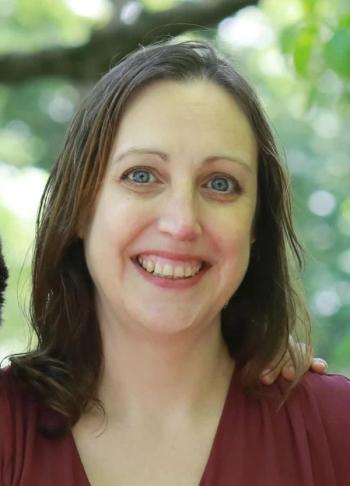
Practice succession is a career-long endeavor
Professional reward... is closely aligned with a thoughtfully managed hospital.
Veterinary practice succession is not a month-long or year-long event. Done correctly, succession is a career-long endeavor.
Veterinary practice ownership is a continuum of acquisition, transition and disposition. This continuum leads to policies, procedures and protocols that sustain the practice's economic microcosm.
A successful plan for transition is based in realistic economics encompassing fee structure, expense management, sustainable cash flow, adequate capital reserves, planned and methodical reinvestment, tax law and rates, and responsible stewardship.
Professional reward, career fulfillment and financial success in veterinary private practice is closely aligned with a thoughtfully managed hospital.
Associate veterinarians, spouses, employees, administrators, owners and other stakeholders (vendors, clients, patients) are impacted by the cyclical nature of practice ownership. The economics of veterinary practice operations affect current income yield and long-term appreciation of asset value, parallel universes that affect every participant and aligned party.
In today's rapidly changing business environment, veterinary practitioners must understand how industry impacts of the last decade have influenced practice profitability, compensation and overall practice value. Whether you are a practice owner, an employee veterinarian or involved in practice administration, you should have a basic understanding of macro and micro economics affecting your individual compensation and return for time and effort and for equity investment in practice assets.
What can you do to protect the value of the veterinary practice? Ultimately, your individual income stream, ability to care for your family and gain a comfortable eventual retirement depend on the apparently small, daily decisions you make in a variety of areas.
Professional success and financial reward is contingent on your attentiveness to reliable systems, personnel management and leadership, and a healthy client-pet relationship based on medical, surgical and diagnostic acumen.
The basis of continuing practice financial success can be found through analysis and knowledge of the various assets that comprise a veterinary practice's structure. Understanding that foundation leads to the realization of how every decision you make integrates into current earnings potential and appreciating worth of the practice.
Two parallel goals exist: optimization of current earnings (profits) and building practice value. Veterinary practices are truly investments requiring tending (and worth tending). Practice worth becomes a continuum that doesn't stop at any particular point in time. The practice's value becomes a measurement of your worth as a doctor, quantification of success in business and, perhaps, a final validation of career effort. [Owen E. McCafferty, CPA, CVPM (440) 779-1099 from various past writings about veterinary practice valuation.]
Put a number on it
The sum total of practice value often is measured through formalized business appraisal methods. In 1989, The Appraisal Foundation established the Appraisal Standards Board (ASB), which is authorized by Congress as the source of appraisal standards and appraiser qualifications. The ASB took over the ongoing development, publication, interpretations and amendment of the Uniform Standards of Professional Appraisal Practice (USPAP).
The USPAP, adopted by major appraisal organizations in North America, represents the generally accepted and recognized standards of appraisal practice in the United States.
Besides appraisal standards, the USPAP includes rules of ethics, conduct, management, confidentiality and record keeping.
For example, the conduct rule states that an appraiser must not perform as an advocate for any party or issue, and must not accept an assignment that includes the reporting of predetermined opinions and conclusions.
Practice valuation can be used for a variety of purposes. Not only can you plan for the future, you can anticipate the results based on decisions made precedent and the opportunities that exist for variance in the future. Practice worth is of interest to you, your family, your present partners, your future partners, your anticipatory associates and to the practice's other support employees.
Practice valuations are most commonly sought at the point of associate buy-in or practice sale. However, the practical application of repetitive valuations spans a variety of purposes. We feel the most key of these reasons is in analytic review of operations and planning improvement through regression studies and strategic valuation. Typical cited uses of valuation include:
- Purchase/sale of a practice
- Buy-in/buy-out of a practice
- Merger of practice to determine fair market value
- Buy-sell agreement between corporate practice and shareholders or partners in a partnership.
- Financing - bank presentations and business plans
- Determination of federal and state death taxes
- General estate planning, including gifting
- Divorce settlements
- Diagnostic tool of true progress made throughout the year
- Identifying issues in a transaction lacking arm's-length attributes.
The various component assets of a veterinary practice are valued using a combination of different valuation methods. The income method represents capitalization of average excess expected earnings from the practice, a reasonable return on investment based on relative risk, and current interest rates. The market method uses valuation based on comparison with results of similar property sold. The cost method makes determination of replacement cost less pro-forma depreciation or obsolescence, if any, of all tangible assets.
Goodwill easily can be the asset of greatest worth in valuing a veterinary practice operating entity. Using the income method for valuation, goodwill represents anticipated earnings of the practice and the relative risk for equity ownership in a closely held small professional business. Because excess earnings become crucial in determination of goodwill value, decisions you make as a manager form a history from which goodwill value derives.
Consider an almost endless list of factors that will affect excess earnings:
- Leadership characteristics and scope of practice management
- Professional and business ethics
- Personnel training and maturity
- Attitudes toward employees, clients and patients
- Attitudes about delegation of duties vs. abdication of involvement
- Practice rainmaking efforts and activity in the community
- Level and standards of medicine and surgery
- Commitment to formal continuing professional education for maintaining clinical skills
- Attitudes toward reinvestment in the practice
- Proactive maintenance of an adequate fee structure
- Systems and policies to manage risk (internal controls)
- Reasonable expense mitigation through ongoing budget attention
- Facility use decisions.
Enhancing revenue realization and expense control can maximize excess earnings, but long-term impact must be considered. Management decisions made for short-run gains can result in diminished value over the long haul. Deferring maintenance and repairs, employee training, computerization and equipment reinvestment are just a few examples of where immediate savings can be made, but practice growth and future economic health might be impaired.
Newsletter
From exam room tips to practice management insights, get trusted veterinary news delivered straight to your inbox—subscribe to dvm360.




